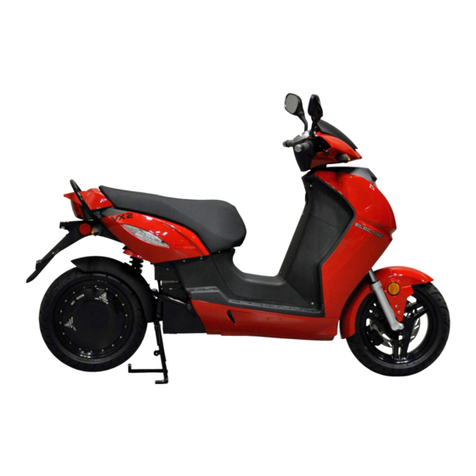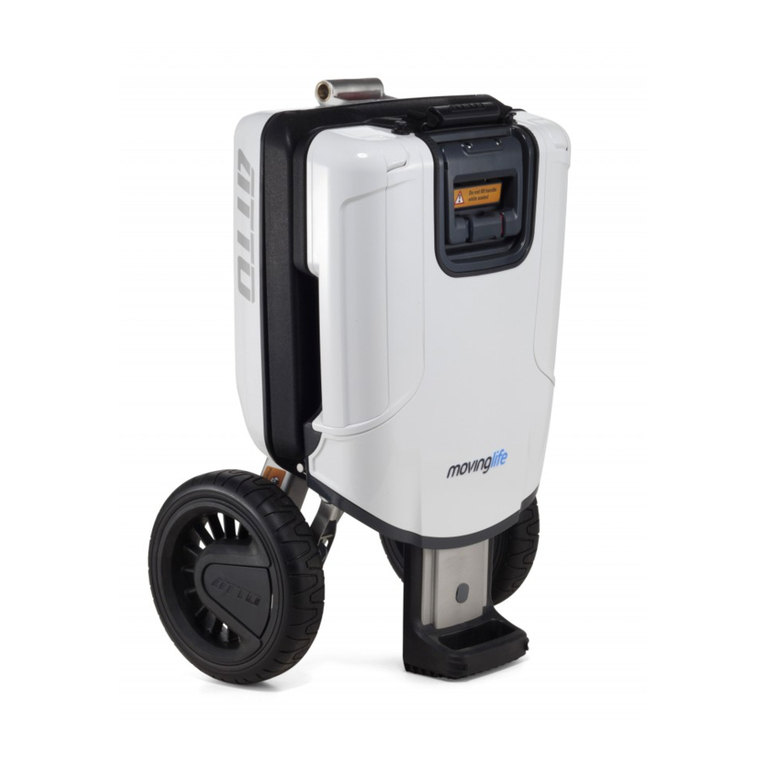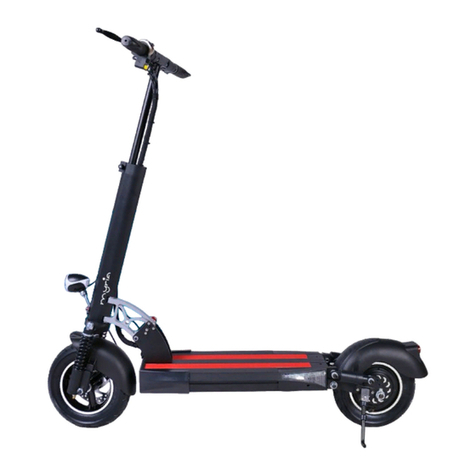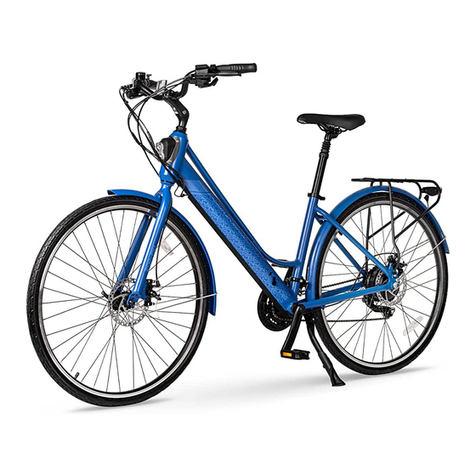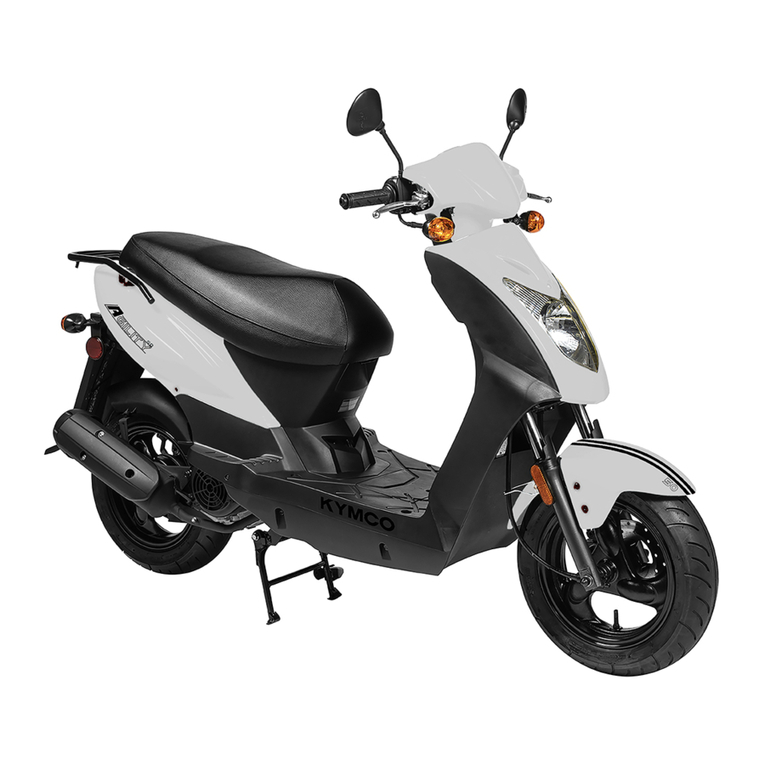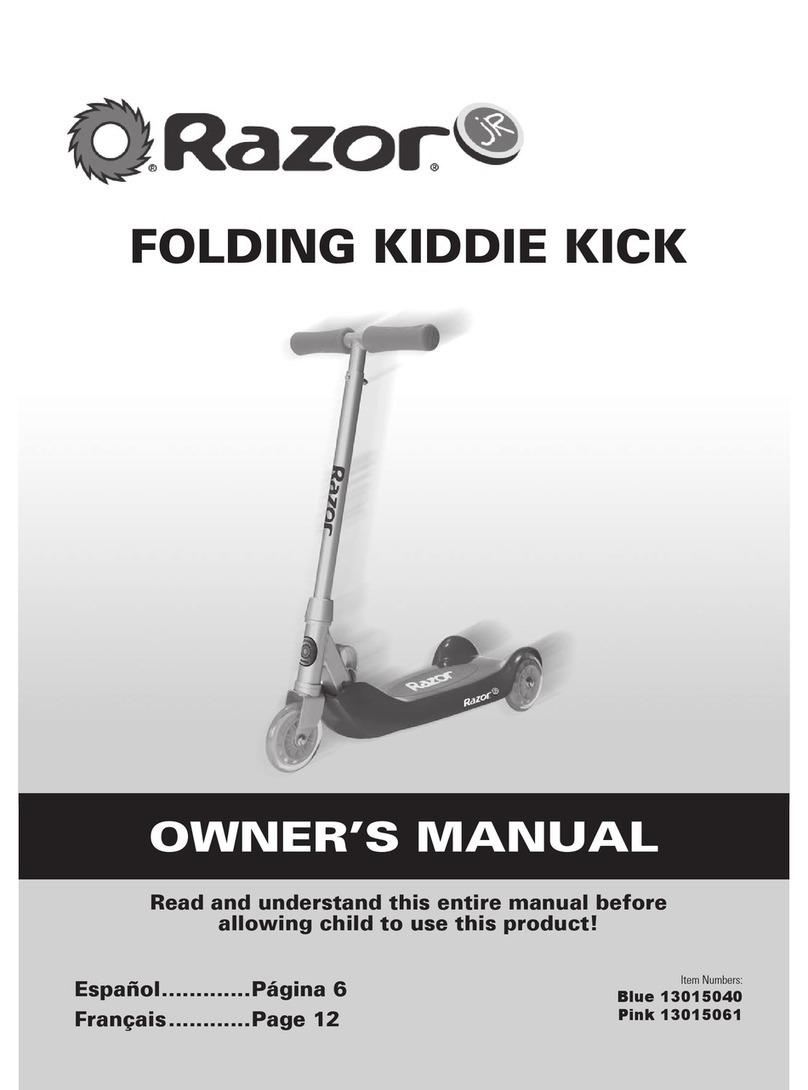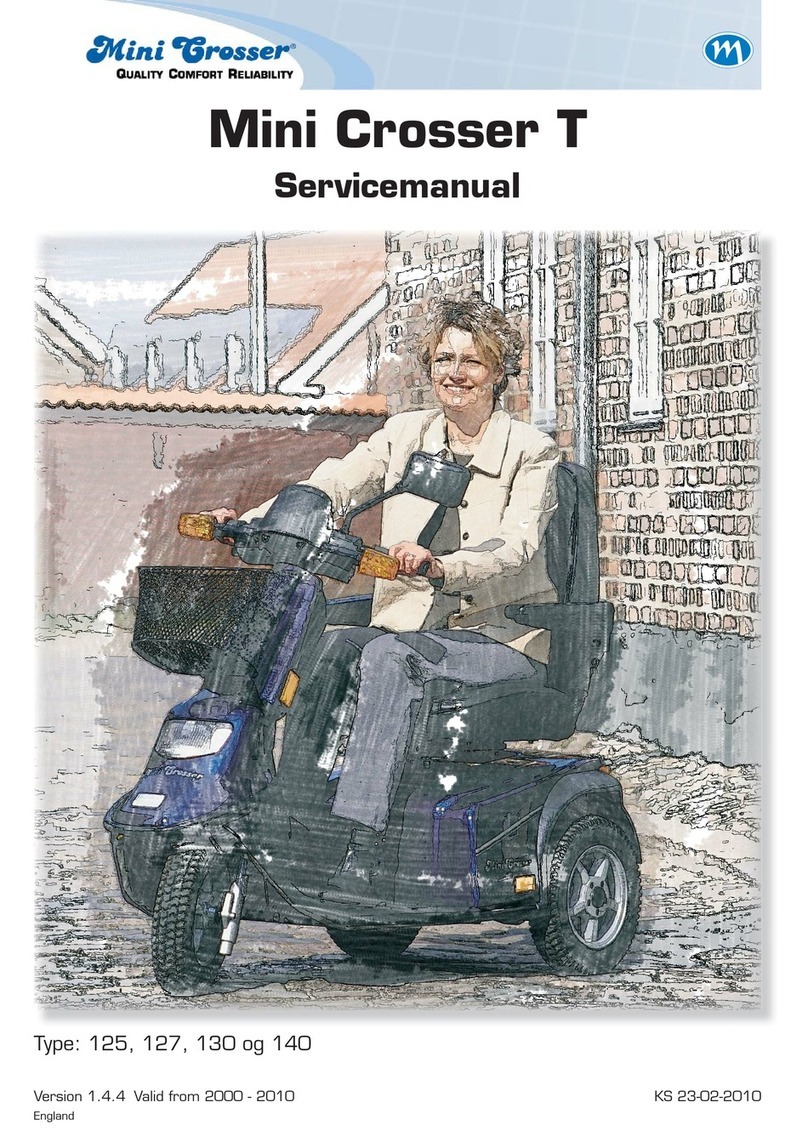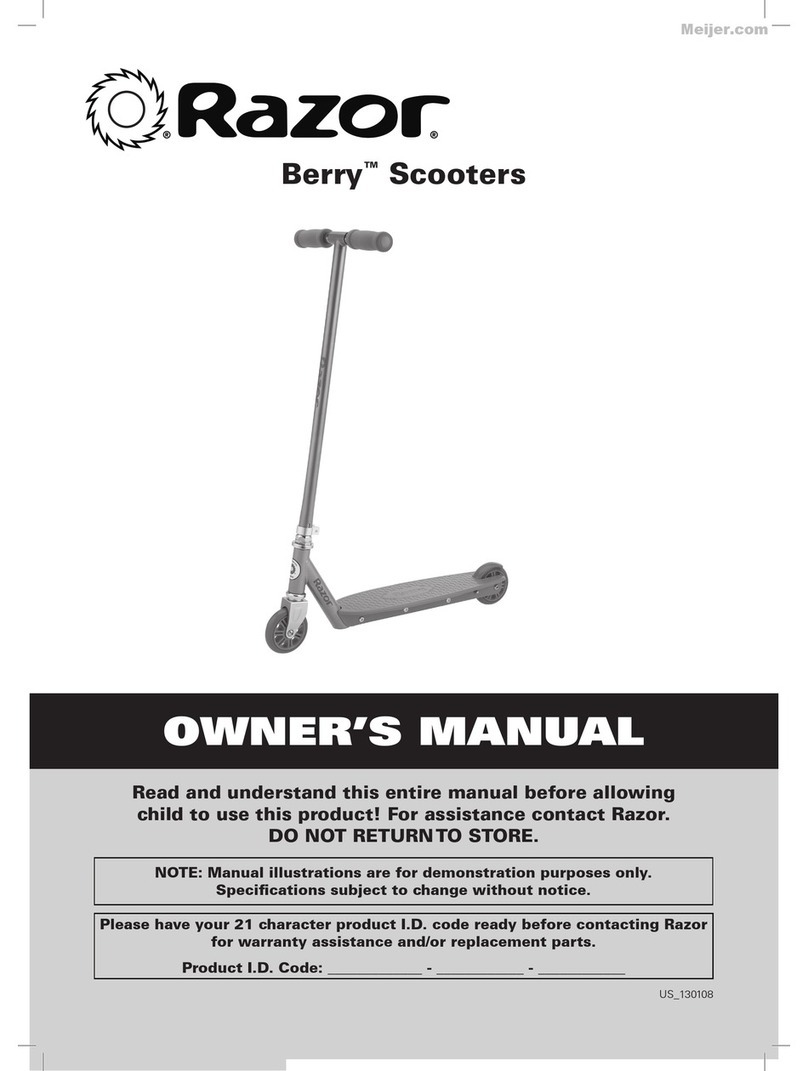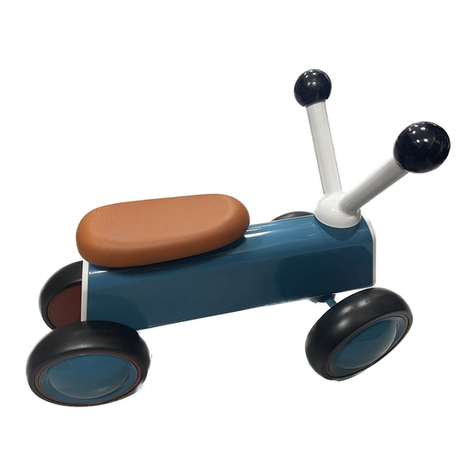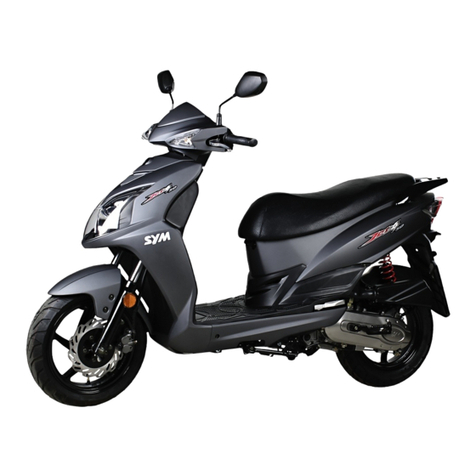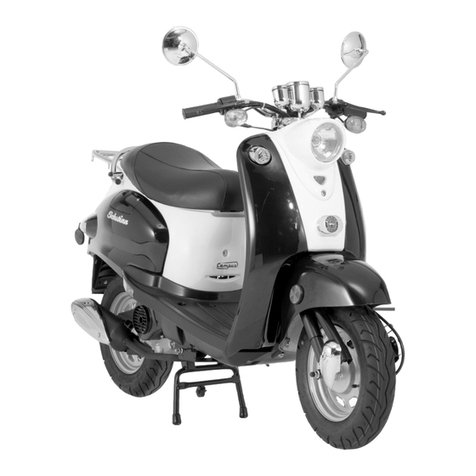Nexange NXL1 White User manual

USER GUIDE
NXL1 White
PLEASE READ ME FIRST!

Table of contents
1.0 Introduction ...................................................................................................................................... 3
1.1 General presentation of the vehicle.............................................................................................. 3
1.2 Function display............................................................................................................................. 4
2.0 Using the bike ................................................................................................................................... 4
2.1 Riding the bike................................................................................................................................... 4
2.2 Adjusting the height of the seat........................................................................................................ 5
2.3 Propping the bike upon its stand .................................................................................................. 5
2.4 Lights ............................................................................................................................................. 5
2.5 Quick-release devices.................................................................................................................... 5
2.6 Precautions required prior to each use......................................................................................... 6
2.7 Lubrication..................................................................................................................................... 6
2.8 Routine maintenance .................................................................................................................... 7
2.8.1. Recommended values of the nut torque .................................................................................. 7
2.8.2 Service checklist ..................................................................................................................... 7
3. The battery.......................................................................................................................................... 8
3.1 Installing and removing the battery.............................................................................................. 8
3.2 Charging the battery...................................................................................................................... 8
3.3 Battery autonomy and lifespan..................................................................................................... 9
3.3.1 Autonomy............................................................................................................................... 9
3.3.2 Battery.................................................................................................................................... 9
3.3.3 Maintenance .......................................................................................................................... 9
3.4 Battery safety instructions ............................................................................................................ 9
4. Safety and maintenance Recommendations................................................................................... 10
4.1 Safety recommendations ............................................................................................................ 10
4.2 Maintenance ............................................................................................................................... 11
5. Accessories........................................................................................................................................ 12
6. Warranty ........................................................................................................................................... 12

1.0 Introduction
We want to thank you for your e-bike purchase. The cycle, equipped with pedals and an auxiliary
electric motor, cannot be propelled exclusively by means of this auxiliary electric motor. You will
thoroughly enjoy riding this new, electrically assisted bike. Riding an e-bike means that you are
helping preserve the environment, since you are not emitting any carbon or any other elements
that pollute. For your safety and for the safety of others, we recommend that you obey all road
regulations and wear a protective helmet. For optimal, safe and enjoyable use of the e-bike, make
sure you thoroughly read this user guide before you first use it. Base on the user guide to use it, or
it may shorten the useful time.
Have a pleasant ride!
1.1 General presentation of the vehicle
General information
Weight of bike without battery: 20.6 KG
Maximum assistance speed: 25KM/H
Brushless Motor: 36V 250 W
Multifunction display
The dimensions of the bike (mm):
L 1750 x l 620 x h 1200
Permissible weight of the rider:100KG
Maximum total weight: 120KG (includes the bike, the rider and the luggage)
Battery
Lithium-ion 36V11AH
Charge time: 3-6 hours for 100% charge
with the standard 1.8Ah
Charger Autonomy: between 40 and 120 km,
depending on the assistance level
2 Charge indicators on the display unit
-1 located on the handlebars and
-1 located on the battery
Weight: 3.4 kg
Frame and handlebars
Aluminum tubes, type 6061
Suspension fork (non-adjustable)
Main stand
Seat
Adjustable height (880-980 mm)
Maintained by a non-adjustable shock absorber

Cycle components
26’’ diameter (double chamber aluminium wheel)
Toothed brake adjustment wheel
44-tooth chain wheel
Front light activated by switch.
1.2 Function display
(find attached LCD manual))
2.0 Using the bike
2.1 Riding the bike
Before taking off, make sure that you activate
the battery by pressing on the button located on
the right side of the battery.
The 4 green LEDs located at the back
of the battery indicate its charge level.
Turn on the display unit that is on the handlebars
(see 1.3). Select your desired assistance level and begin to
pedal you’ll find that the engine starts as soon as you start
pedaling.
When you use the brakes, the contactor located
within these brakes immediately halt the
engine’s assistance. The left brakelever controls
the front brake. the right brake lever controls the
rear brake.
You can also use the bike without the electric assistance mode by turning off the battery (switch
button on «O » or by adjusting the assistance level on 0). The engine will then feature zero
resistance: you’ll be freewheeling. Select the appropriate gear by activating the 6-speed gear
lever.

2.2 Adjusting the height of the seat
Unlock the lever (OPEN), adjust the seat height
to the desired position without ever exceeding the
mark carved onto the seat’s tube, lock the lever(LOCK).
The seat’s height must be set so that yourleg is stretched
out when the corresponding pedal is in the lower
position.
2.3 Propping the bike upon its stand
Your bike is equipped with a main stand. Always
prop up the bike on its stand on a flat and stable
ground surface.
2.4 Lights
The front light has an autonomous
power supply. It turned on and off by the switch
located on the top of the Light. The LED lights
have a lifespan Lasting several years. See your
dealer to Obtain replacements. Draw attention
to the national legal requirements when the bicycle
is to be ridden on public roads.
2.5 Quick-release devices
Tighten the adjusting nut by hand and move the quick release lever to the closed position. You
should feel considerable resistance while moving the lever. If not, re-open and re-tighten the
lever, then move it to the closed position so it is in line with the frame

2.6 Precautions required prior to each use
Verify that the brakes and the front and rear lights are all working properly.
Check the pressure of the tyres.
On derailleur geared bicycles the rear derailleur automatically tensions the chain.
Make sure that the hinges on your bike are properly locked. Indeed, when using the bike
on a regular basis, the tension of the hinges’ adjustment and locking systems can change
slightly.
Whenever necessary, adjust the tension once again.
This bike is not designed for rough usage, such as jumps, riding up or off of pavements,
and riding on unpaved roads. For your own safety, no modifications may be made to the
bike.
Please note: if you use the bike frequently, it is recommended that you inspect the state
of the fork, the frame, the suspension and the fasteners.
The materials and components may be subject to different reactions to usage and wear.
If you have any doubts, contact your dealer, who will proceed with the necessary
inspection.
2.7 Lubrication
Frequency
Components
Lubricant
How to lubricate
weekly
Chain Derailleur
Pulleys Derailleurs
Brake Calipers Brake
Levers
Chain Lube or Light Oil Chain
Lube or Light Oil
Oil
Oil
Oil
Brush On or Squirt Brush
On or Squirt Oil Can 3
drops from oil can 2 drops
from oil can
monthly
Shift Levers
Lithium Based Grease
Disassemble
Every 6
monthes
Freewheel
Brake Cables
Oil Lithium Based Grease
2 squirts from oil can
Disassemble
yearly
Bottom Bracket
Pedals Derailleur
Cables Wheel
Bearings Headset
Seat Post
Lithium Based Grease Lithium
Based Grease Lithium Based
Grease Lithium Based Grease
Lithium Based Grease Lithium
Based Grease
Disassemble Disassemble
Disassemble Disassemble
Disassemble Disassemble
Note: The frequency of maintenance should increase with use in wet or dusty conditions. Do not
over lubricate - remove excess lubricant to prevent dirt build up. Never use a degreaser to
lubricate your chain.

2.8 Routine maintenance
2.8.1. Recommended values of the nut torque
Front Wheel Nuts
22-27 Newton Meters
22.0 –26.9 J
Rear Wheel Nuts
24-29 Newton Meters
23.7 - 28.9 J
Seat Binder Nut
12- 17 Newton Meters
11.9 –16.9 J
Seat Pillar Clamp Nut
15- 19 Newton Meters
14.9 –19.0 J
Brake Anchor Nut
7- 11 Newton Meters
6.9 –11.0 J
Handlebar Clamp Nut
17- 19 Newton Meters
16.9 –19.0 J
Head Stem Expander
Nut
17-19 Newton Meters
16.9 - 19.0 J
Crank Cotter Pin Nuts
9-14 Newton Meters
8.9 –14.0 J
Brake Centre Bolt
2-17 Newton Meters
2.0 –16.9 J
2.8.2 Service checklist
Frequency
Task
Before every ride
Be sure batteries are fully charged
Check tire pressure
Check brake operation
Check wheels for loose spokes
After every ride
Be sure to fully charge batteries
Quick wipe down with damp
Weekly
Lubrication as per schedule2.6
Monthly
Inspect wires
Inspect connectors
Check derailleur adjustment
Check brake adjustment
Check brake and gear cable adjustment
Check tire wear and pressure
Check wheels are true and spokes tight
Check hub, head set and crank bearings for
looseness
Check pedals are tight
Check handlebars and stem are tight
Check seat and seat post are tight and comfortably
adjusted
Check frame and fork for trueness Lubrication as
per schedule2.6
Perform safety check

Every 6 month
Lubrication as per schedule 2.6
Check all points as per monthly service
Check and replace brake pads, if required
Check chain for excess play or wear
yearly
Lubrication as per schedule 2.6
3. The battery
3.1 Installing and removing the battery
To remove the battery, unfasten the lock
that is located along the battery’s box.
Remove the battery by pulling it out.
When you put the battery back into
place, don't forget to fasten the lock..
3.2 Charging the battery
Never let a battery be charged unattended!
The battery’s autonomy is indicated with the 4 green LED lights located on top of the battery, and
also on the display unit located on the handlebars (see 1.3 indicator 8). Your battery must be
charged in an ambient temperature, on a non-flammable and dry surface, away from any sources
of heat, humidity or flammable materials. Also, it must not be covered.
Here are the steps to be followed when charging your battery:
Step 1
Turn the battery off. The LED lights will be off.
Step 2
Plug the charger (which is off) into the socket and then insert the charger’s
plug into the battery, which is also off.
Step 3
the charger’s LED indicators lit up in the following manner:
• The red LED lights will be on: the battery is being charged.
• The red LED light becomes green:
the battery is charged; you can unplug the charger. (B) .

(a) (b)
It takes 3 - 6 hours for the battery to be fully charged when using the standard charger that’s
supplied with your bike.
3.3 Battery autonomy and lifespan
3.3.1 Autonomy
The bike's autonomy ranges from 40 to 120 kilometers, as it depends on many different factors
(degree of assistance used, topology, rider’s weight, frequent stops/start-ups, hills, tyre pressure,
etc…)
3.3.2 Battery
Your battery is just like a household battery. It contains a limited amount of energy, which
diminishes as it is being used. When the available autonomy no longer corresponds with your
needs, you will be able to obtain a new one from your dealer.
3.3.3 Maintenance
If you don’t use your bike for a period of time exceeding 2 months, store it in a humidity-free area
to protect the electronic components and make sure that the battery is neither completely
charged nor completely discharged (2 or 3 green LEDs lit up).
3.4 Battery safety instructions
Your bike's battery is an electric component made up of chemical elements. For your safety, it is
imperative that you obey the following rules:
Always handle with great care
Always keep it away from children
Do not take it apart or hit, pierce or submerge it
Keep it away from temperatures exceeding 60°
Never create a connection between the contacts
located at the bottom of the battery
Never let the battery charge unattended
Never sleep near a battery that is charging
Only use the charger that came with your
Velosolex or that was supplied by your dealer
If your battery is damaged, do not use it and take
it back to your dealer as soon as possible
Note:
Never store a completely discharged battery as it might result in permanent damage.
During the winter or long storage periods, it is recommended that you charge the battery
halfway every 2 months. Don’t forget to switch it off. Store your battery at a temperature
between 15°and 25°.

4. Safety and maintenance Recommendations
4.1 Safety recommendations
Helmet: For safe riding, use a bicycle helmet.
Tyres: Inspect the wear of your tyres on a regular basis and verify the tyre pressure at least
once a month.
Tyre pressure: 40-65 PSI depending on the weight of the user.
Wheel-rims: Please care of the wheel-rims and a clear explanation of any danger of rim-wear.
Brakes
Please check all connections of the Disc Brakes before attempting to ride the bicycle.
Secure tightly the 2 bolts that hold the brake mechanism to the fork.
Insert the front wheel into the fork dropouts ensuring that the disc fits into the brake
mechanism between the enclosed brake pads
Secure the front wheel to the bicycle by tightening the quick release mechanism and
clamping the lever to the closed position.
Please refer to section 6 for further instruction on quick release mechanisms.
Next, attach the cable to the brake lever by inserting the cable end into the cable end
holder after the barrel adjuster and lock nut slots have been aligned with the cable
end holder.
After the cable is secured to the lever, rotate the barrel adjuster and lock nut so the
slots no longer line up.
Ensure the cable housing seats appropriately into the end of the barrel adjuster and
check for any kinks or damage.
Slide the exposed brake cable through the rotating rod/housing stop located on the
caliper body and seat the housing all the way into the same stop.
Insert the cable into the spring and spring boot. Next, slide the cable through the
cable anchor and pull all the slack out.
Secure the cable in place by tightening the bolts that comprise the anchor assembly.
Some disc brakes will have a centering devise while others are a free-floating
mechanism.
If your caliper body is equipped with centering bolts, apply the brake lever after the
cable has been connected.
While engaging the lever, tighten the centering bolts securely.
This will center the caliper body on the disc.
Minor brake adjustment can be made via the barrel cable adjusters which are located
on each brake lever.
To adjust, squeeze the brake pads against the rim, loosen the lock nut, and turn the
adjuster to pull the brake pads closer to, or spread them away from the rim as
required.
Make sure to inspect the wear of the front brake pads as well as the rear brake blocks.
If the brake action remains insufficient, despite your adjustment efforts using the
toothed wheel located next to the levers, contact your dealer so that these worn out
parts can be replaced.
Important: braking distance increases on humid or slippery ground

Saddle-post
Suitable covering and coil springs under the
saddle if a child-seat is fitted to prevent
trapping of fingers.
Reflector
Please regarding the positioning of reflectors and
lamps such that these are not obscured when
luggage is attached to the luggage carrier.
Gears
Like the chain, the freewheel must be kept clean and well lubricated. If the chain has become
worn and needs replacing, then it is likely that the freewheel will also have become worn and
should also be replaced. Take the chain off the freewheel and rotate it with your hand. If you
hear a grinding noise or the freewheel stops suddenly after spinning it, it may need
adjustment or replacement.
Carrier
Maximum authorized load: 25KG
This luggage carrier is not designed to pull a trailer. Don't install the child-seat on the carrier. The
bicycle may behave differently (particularly with regard to steering and braking) when the luggage
carrier is loaded, please attention. Please ensure that any luggage fitted to the luggage carrier is
securely fitted in accordance with the manufacturer’s instructions and that there are no loose
straps that can get caught in any of the wheels. Please distribute luggage evenly between the two
sides of the luggage carrier.
Rack
The rack is able to hold a maximum, evenly balanced load of 10KG.
Signaling device
The bike is silent. In order to alert others as to your presence, you have an approved signaling
device: use it only when absolutely necessary, don’t abuse it!
Battery
Cf. Chapter. 3.4
WARNING:
As with all mechanical components, the bicycle is subjected to wear and high stresses.
Different materials and components may react to wear or stress fatigue in different ways. If
the design life of a component has been exceeded, it may suddenly fail possibly causing
injuries to the rider. Any form of crack, scratches or change of coloring in highly stressed areas
indicate that the life of the component has been reached and it should be replaced.
4.2 Maintenance
Caution: Bike maintenance and repair require specific skills and appropriate tools. Do not
repair your bike or change any of its settings if you have the slightest doubt regarding your
ability to correctly proceed with such work. Contact your dealer. Any adjustments or repairs

that are not properly done can damage the bike
and lead to accidents resulting in extensive
injuries. Using only genuine replacement parts for safety-critical components.
Cleaning
Always remove the battery when cleaning. Use soapy water or water mixed with a gentle
detergent, and then rinse with clean water. Make sure that the controller located behind the
battery compartment is not exposed to humidity as it contains electronic components. Do not
use a high pressure washer!
Maintenance
Your bike is safe for the environment. Used parts must be disposed of in appropriate selective
sorting recycling bins. A battery that no longer works must be returned to your dealer so that
he may pass it on to a recycling company. Replacing the rear light batteries: (It is
recommended that you replace them every year): Remove the screw to access the batteries.
The engine does not require any sort of maintenance.
Chain : It is recommended that you lubricate your bike’s 6 speed gearwheels and chain on a
regular basis using appropriate products (ask your dealer for advice).
5. Accessories
Mudguards (Place the mudguard assembly between the stays, making sure the mudguard
bracket holes line up with those in the frame. Tighten all bolts and screws until snug.)
Helmet
Baskets
Storage pouch
To order these accessories, get in touch with your dealer. Using only genuine replacement parts
for safety-critical components.
6. Warranty
You are provided with a warranty for one year since the day you buy the bike. Details
regarding your bike’s warranty coverage terms is available from your dealer.
Have a pleasant ride !
Table of contents

